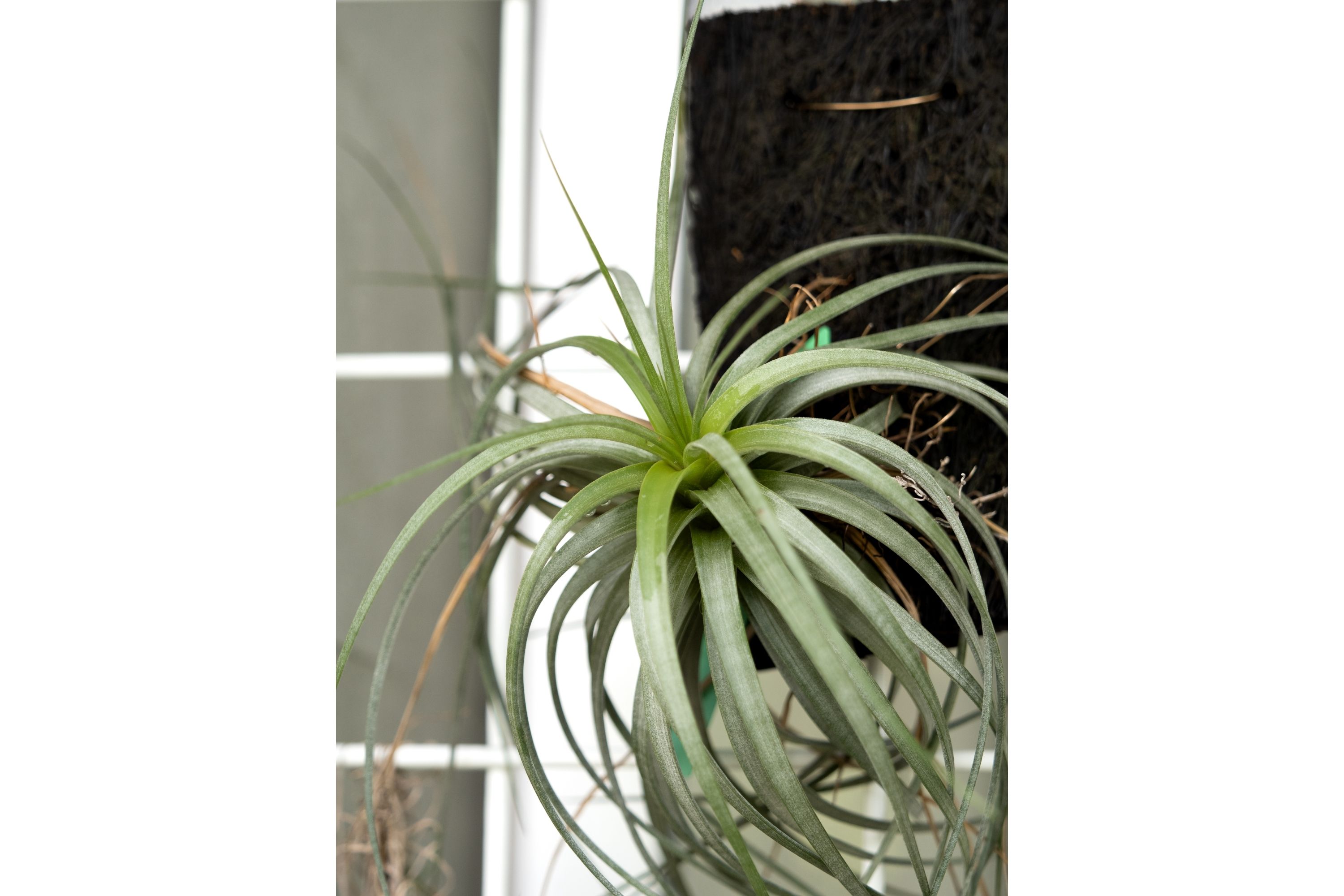Kamm's tillandsia
(Tillandsia kammii)

Description
Tillandsia kammii is a species in the genus Tillandsia that is native to Honduras, but has also been collected in El Salvador. It was first discovered in Honduras in 1977 in the regions of Olancho, Lempira and Copan. Its common name is Kamm's tillandsia. Tillandsia kammii is a xerophytic epiphyte. It is one of only four species of Tillandsia that is protected by the CITES Appendix II. T. kammii has densely arranged leaves and often grows between five and ten centimeters tall. It has thin wiry roots and has been known to grow both as a single plant and in clusters. This plant has a short, bright red inflorescence, surrounded by violet petals, that rarely lasts more than a day after blooming. Unsurprisingly, this plant has a rough texture and appearance which is due to coarse trichomes covering its leaves. Tillandsia kammii closely resembles both T. velutina and T. plagiotropica. It is differentiated from the former by its larger, denser trichomes, and from the latter by its narrower, longer, and more flexible leaves. Tillandsia kammii inhabits the tropical savanna climate in Honduras and El Salvador at elevations of 500 to 1200 m. Average temperatures in its habitat range from 14 °C – 35 °C, with an average total annual precipitation of roughly 1400 mm. Tillandsia is a genus of around 650 species of evergreen, perennial flowering plants in the family Bromeliaceae, native to the forests, mountains and deserts of northern Mexico and south-eastern United States, Mesoamerica and the Caribbean to mid Argentina. Their leaves, more or less silvery in color, are covered with specialized cells (trichomes) capable of rapidly absorbing water that gathers on them. Sometimes they are also commonly known as airplants because of their natural propensity to cling wherever conditions permit: telephone wires, tree branches, barks, bare rocks, etc. Their light seeds and a silky parachute facilitate this spread. Most Tillandsia species are epiphytes which translates to 'upon a plant'. Some are aerophytes, which have a minimal root system and grow on shifting desert soil. Due to their epiphytic way of life, these plants will not grow in soil but live on the branches of trees, in deserts and on other substrates that will not be saturated with water for very long.
Taxonomic tree:







